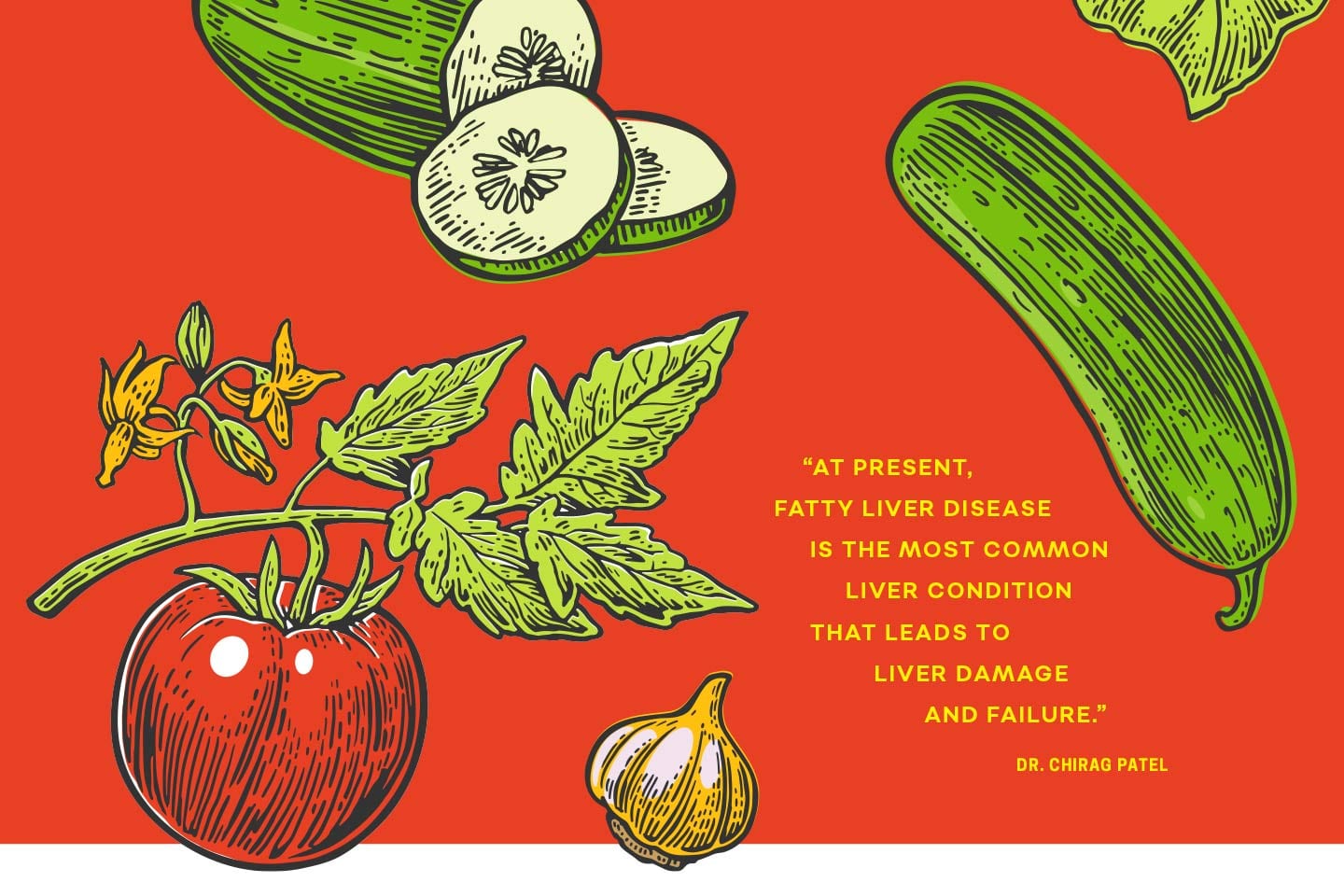By Katy Mena-Berkley



Family Medicine Physician, CHI Memorial Family Practice Associates – Harrison
While liver disease can develop from a number of causes, the damage looks similar. When not treated appropriately, the condition can quickly spiral out of control.
The liver is one of those organs you may not think about often – you don’t feel it the same way you feel your heart beat or your lungs fill with air. But you know it’s there, and you trust it to do its job. “The liver is a crucial organ that helps our bodies filter blood from our digestive tract, detoxify chemicals, and break down medicines, among other functions,” explains Dr. Erik Ewing, family medicine physician with CHI Memorial Family Practice Associates – Harrison.
However, several factors can compromise the health of your body’s largest internal organ. Certain viruses, excessive alcohol intake, drug use, obesity, and more can negatively impact the health of your liver and lead to liver disease. According to the Centers for Disease Control and Prevention, roughly 4.5 million adults in the United States were diagnosed with liver disease during 2017.
A Healthy Liver
Located in the upper right quadrant of your abdomen, your liver is capable of completing more than 500 tasks, ranging from creating glucose to fighting infections, storing energy, and supporting the proper clotting of blood.
According to studies, if 50-60% of a healthy liver’s cells are killed in a few short days as a consequence of something like an overdose of a pain reliever like Tylenol, the liver will be restored within the next 30 days. “The liver is the only internal organ that can regenerate,” says Dr. Ewing.
If excessive development of scar tissue prevents proper liver regeneration though, reversal of damage becomes difficult, and your liver will begin to lose its ability to function. “The liver is involved in so many different metabolic functions that when something severely injures those cells, it can no longer perform its jobs,” explains Dr. William Buchner, Jr., a gastroenterologist with Gastrointestinal Associates of Cleveland.
When Your Liver Loses Functionality



Gastroenterologist, Gastrointestinal
Associates Of Cleveland
Liver disease is an overarching term for any condition that damages the liver and prevents it from functioning properly, and it affects approximately 10% of American adults. When liver damage occurs, scar tissue develops and affects blood flow to the liver. Pressure begins to build up, and the liver can no longer perform as intended. “Like any living tissue, the liver needs a good supply of oxygen delivered through the bloodstream. If something blocks or impairs that flow of oxygen, it will cause damage,” says Dr. Buchner. Suddenly faced with a filter that is not performing to the best of its ability, your body will begin to shut down if the damage is not treated.
Sometimes liver disease is caused by a genetic predisposition – like hemochromatosis (when your body absorbs too much iron) and Wilson disease (a rare genetic disease that causes copper to accumulate in the liver) – an autoimmune or metabolic disorder, or cancer that you cannot prevent.
On the other hand, certain lifestyle choices that are linked to the disease are preventable. The leading risk factors for death from liver disease include alcohol abuse, hepatitis viruses, and obesity. “Without a healthy liver, having a properly functioning metabolism, healthy circulation and digestion, and balanced hormones is nearly impossible,” says Dr. Chirag Patel, a hepatologist with Galen Hepatology.
The Stages of Liver Disease
No matter what causes liver disease, the way it progresses follows a similar pattern that may be broken into four stages. “Liver disease staging is based on the degree of fibrosis, or scarring, present,” explains Dr. Ewing.
1. Inflammation
Stage one begins with inflammation of the liver, which causes it to become enlarged. According to the American Liver Foundation, that inflammation develops in an effort to fight infection and heal injured tissue. The inflammation generally isn’t felt, so an individual with stage one liver disease is not likely to recognize something’s wrong.
2. Fibrosis
“If left untreated, the inflamed liver will start to scar,” explains Dr. Patel. “As excess scar tissue grows, it replaces healthy liver tissue, which is a process called fibrosis.” This new scar tissue does not function as healthy tissue would, and it oftentimes blocks healthy blood flow. The good news is, during this stage, liver damage may still be reversed with proper treatment.
3. Cirrhosis
If stage two liver disease is neglected, it may progress to stage three, which is cirrhosis of the liver. By the time liver disease progresses to cirrhosis, the scar tissue has become hard, and the liver has begun to break down. Symptoms become noticeable during this stage and may be the first signs of liver disease. Those with the disease may notice fluid buildup in the abdomen; discoloration and yellowing of the eyes and skin; fatigue; more bleeding or bruising than normal; and even issues with concentration, memory, sleep, and other important brain functions.
4. Liver Failure
Without intervention, cirrhosis can devolve into liver failure, which is a life-threatening condition that requires immediate medical care. Symptoms like nausea, fatigue, loss of appetite, and diarrhea will present, and they will become more serious as liver failure progresses. Often, a liver transplant is the only effective treatment during this stage.


Taking Control



Hepatologist, Galen Hepatology
Living mindfully and treating existing chronic liver disease appropriately can help minimize the development of scar tissue in the liver and address any related health issues. “The goal of liver disease treatment is to identify the underlying cause and treat that,” says Dr. Buchner. “We have a variety of blood tests that can help us determine specific causes, and we can also look to the patient’s history.”
Treatment of alcohol-induced cirrhosis begins with addressing any dependency on alcohol. If you are living with addiction, talk with your physician about recovery programs he or she recommends. If you continue to drink, you will continue to do toxic damage to your liver.
If your condition is a result of an unhealthy diet, work with a nutritionist to design a diet and exercise plan that is manageable with your lifestyle. “At present, fatty liver disease, which means you have extra fat in your liver, is the most common liver condition that leads to liver damage and failure,” says Dr. Patel. “It is the leading reason for liver transplants.” The condition is marked by excessive belly fat, high cholesterol, high blood pressure, and insulin resistance. Losing just 7-10% of your body weight can help reverse or slow the progression of the disease.
If you have cirrhosis caused by hepatitis B or C, your doctor may recommend certain medications to slow further degradation of the cells in your liver.
Another solution to manage complications caused by chronic liver disease is lowering your salt intake to reduce the recurrence of excess fluid in the abdomen.
While liver disease may be managed if found early, prevention is the best method. By adopting healthy habits, getting vaccinations as directed by your doctor, and using medications appropriately, you can ensure that your liver stays as healthy as possible. HS

